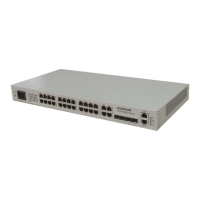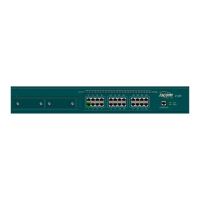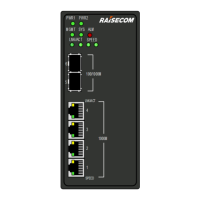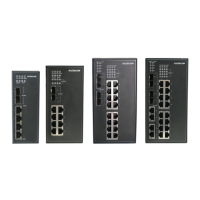Raisecom
ISCOM2600G-HI (A) Series Configuration Guide
Raisecom Proprietary and Confidential
Copyright © Raisecom Technology Co., Ltd.
The information to be exchanged by the router is all information that it knows, namely, its
routing table.
Routers exchange routing information periodically (every 30s by default) and update their
routing tables according to received routing information (or according to triggering
conditions).
The largest advantage is easy implementation and small overhead.
RIP has the following disadvantages:
– The maximum available distance is 15 (the value 16 indicates an unreachable
distance), so RIP restricts the network scale.
– The information to be exchanged by routers is the entire routing table. When the
network scale grows, the overhead will increase.
– "The bad news is transmitted slowly", so the convergence time for the update process
is too long.
Based on previous advantages and disadvantages, RIP is applicable to small-scale networks.
Version
There are three RIP versions: RIPv1, RIPv2, and RIPng. RIPv1 and RIPv2 are applicable to
the IPv4 network while RIPng is applicable to the IPv6 network. The ISCOM2600G-HI series
switch supports RIPv1 and RIPv2.
Classful routing protocol
Classless routing protocol
The packet does not contain the subnet
mask, so devices on the network must use
the same subnet mask. Otherwise, errors
will occur.
Support VLSM. The update message carries
the subnet mask.
RIPv1 uses broadcast packets for update.
The broadcast address is 255.255.255.255.
RIPv2 uses multicast packets for update.
The multicast address is 224.0.0.9.
Support automatic route aggregation
rather than manual route aggregation.
Support both automatic route aggregation
and manual route aggregation. You can
manually disable automatic route
aggregation.
RIPv1 does not support inter-router
authentication.
Support authenticating protocol packets in
plaintext or MD5 authentication mode, thus
enhancing security.
RIPv1 does not support tagging routes.
Support tagging routes for filtering and
making policies.
Anti-loop mechanism
RIP supports the following anti-loop mechanisms:
Maximum number of hops: a maximum number of hops is defined (15). When it is 16, it
indicates an unreachable destination.

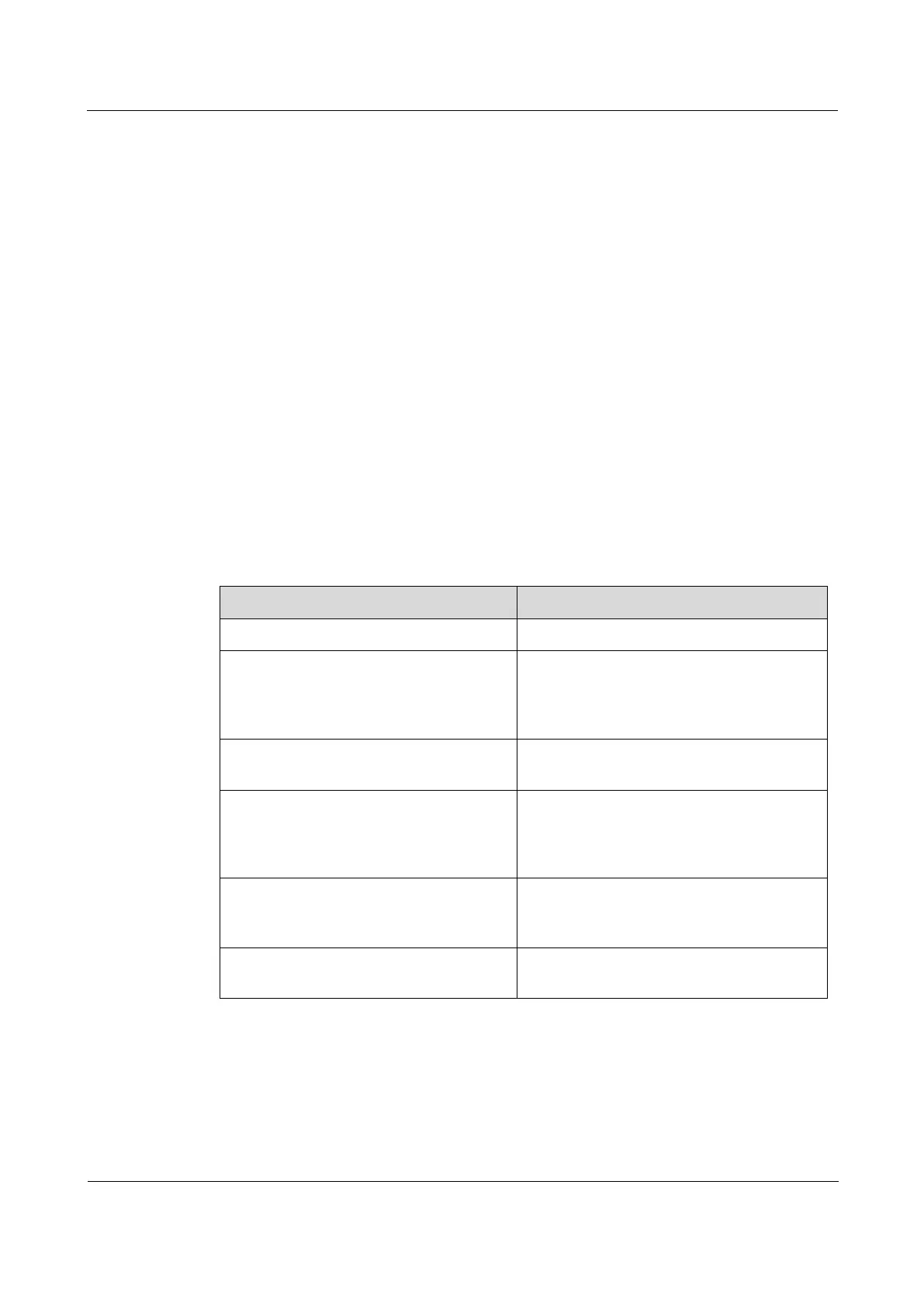